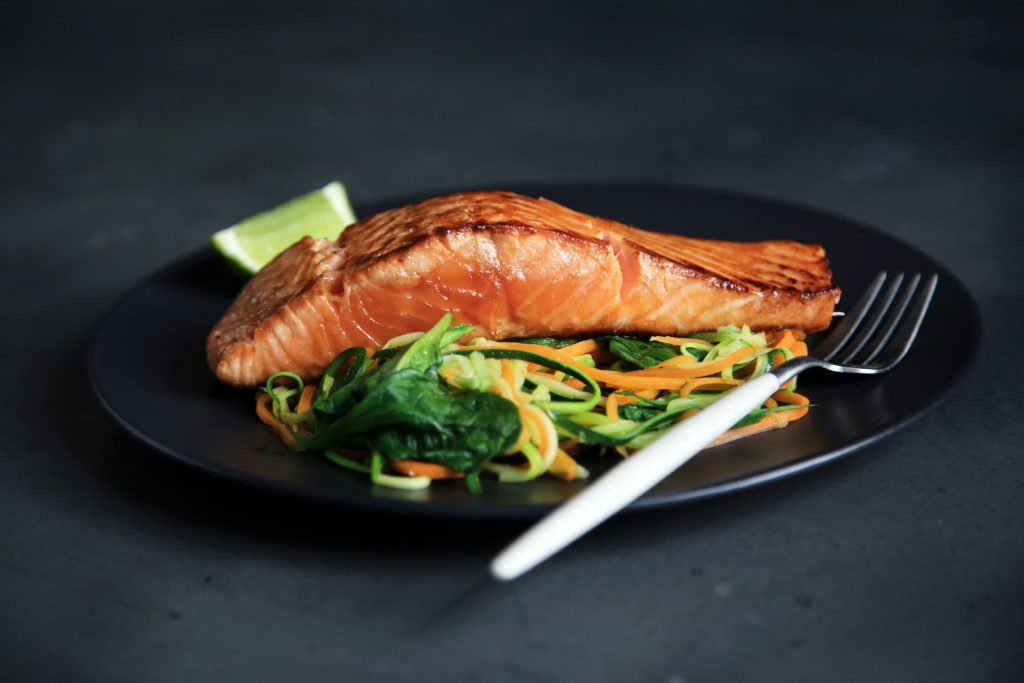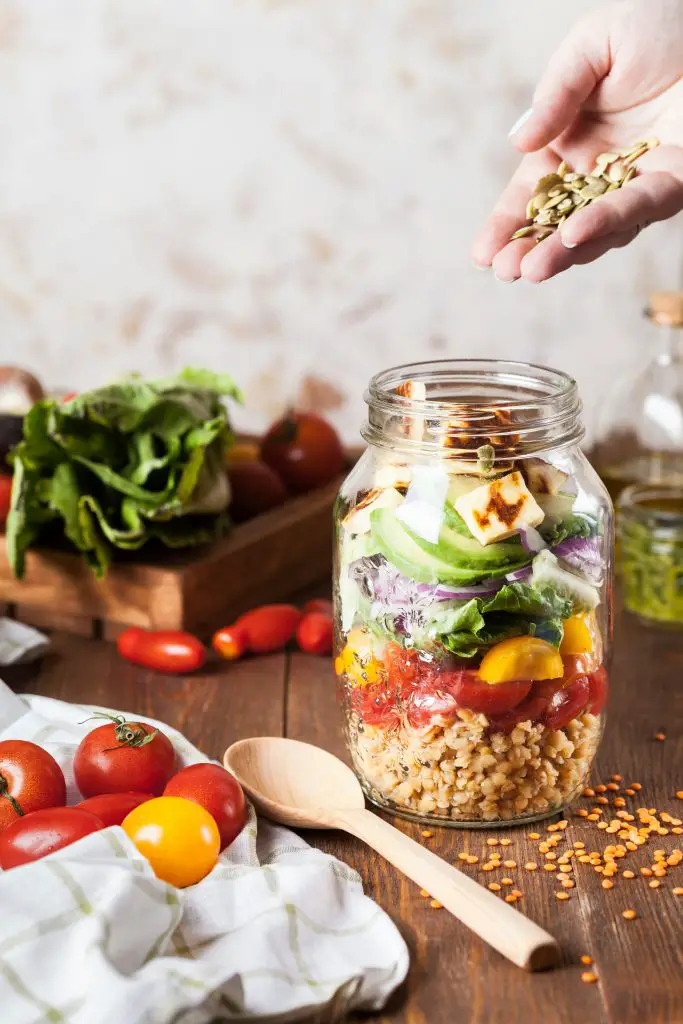Ad Blocker Detected
Our website is made possible by displaying online advertisements to our visitors. Please consider supporting us by disabling your ad blocker.
Are you struggling to maintain a healthy diet and find yourself constantly overeating? Look no further – we have the solution for you. In this article, we will explore the art of mastering portion control for a healthier lifestyle. Discover a range of effective techniques that will empower you to take control of your eating habits and improve your overall well-being. With these simple yet powerful strategies, you will be able to redefine your relationship with food and achieve your health goals with ease. Say goodbye to excess calories and hello to a balanced and fulfilling diet. Let’s delve into the world of portion control and unlock the key to a healthier you.

This image is property of images.unsplash.com.
Understanding Portion Control
What is portion control?
Portion control refers to the practice of mindful and intentional regulation of the amount of food we consume in a single sitting. It involves understanding and being aware of the appropriate serving sizes for different types of food as well as the nutritional needs of our bodies. By practicing portion control, we can ensure that we are consuming just the right amount of food to meet our dietary requirements without overindulging.
Why is portion control important?
Portion control plays a crucial role in maintaining a healthy diet and managing our weight. Overeating can lead to excessive calorie intake, which can contribute to weight gain and negatively impact our overall health. By practicing portion control, we can prevent overconsumption of calories, leading to weight management and a reduced risk of developing chronic conditions such as obesity, diabetes, and heart disease.
Determining Proper Portion Sizes
Using measuring tools
One of the most effective ways to determine proper portion sizes is by using measuring tools such as food scales, measuring cups, and spoons. These tools help us accurately measure the amount of food we are consuming, ensuring that we are not exceeding the recommended serving sizes. Measuring tools are especially useful when it comes to high-calorie foods, such as oils, nuts, and grains, where portion control is crucial.
Visual cues
Another helpful technique for estimating portion sizes is to use visual cues. This involves comparing the food we are about to consume to everyday objects or our own hand. For example, a serving of cooked pasta can be roughly the size of a tennis ball, while a serving of meat should be about the size of a deck of cards. Visual cues provide a convenient and practical way to gauge portion sizes, even when measuring tools are not readily available.
Reading food labels
Food labels can be a reliable source of information when it comes to determining proper portion sizes. Most packaged foods provide serving size information along with the nutritional content per serving. By reading and understanding food labels, we can make informed choices about portion control and ensure we are consuming the appropriate amount of nutrients. Paying attention to recommended serving sizes on food labels can help us prevent unintentional overeating.

This image is property of images.unsplash.com.
Practical Tips for Portion Control
Eat slowly and mindfully
One of the simplest yet most effective ways to practice portion control is to eat slowly and mindfully. Take the time to enjoy each bite and savor the flavors of your food. Eating slowly allows your body to recognize feelings of fullness, preventing you from overeating. By being present and fully engaged with your meal, you can also reduce mindless snacking or reaching for seconds without actually being hungry.
Use smaller plates and bowls
Another practical tip for portion control is to use smaller plates and bowls. By using smaller dishware, you naturally limit the amount of food you can serve yourself. Our brains are wired to feel satisfied when we finish what is on our plate, no matter the size. Therefore, by using smaller plates, you create a visual illusion of a fuller plate, which can help you feel satisfied with smaller portion sizes.
Pre-portion snacks
Pre-portioning snacks into individual servings can help prevent mindless eating and overconsumption. Instead of eating directly from a large bag of chips or a box of cookies, take the time to divide them into smaller portions. This strategy allows you to enjoy your favorite snacks in moderation while maintaining portion control. It’s also helpful to store pre-portioned snacks in separate containers or resealable bags to promote portion awareness.
Avoid eating out of large packages
Eating directly out of large packages, such as a family-sized bag of chips or a pint of ice cream, can make it challenging to gauge proper portion sizes. We tend to consume more when we eat from large containers without a clear reference point. Instead, serve yourself an appropriate portion on a small plate or bowl to maintain portion control. By avoiding eating directly from large packages, you can prevent unintentional overeating.
Share meals or take leftovers
When dining out at restaurants or ordering takeout, consider sharing a meal with a friend or family member. Many restaurant portions are often larger than necessary, leading to overconsumption of calories. Sharing a meal allows you to enjoy a variety of dishes while still practicing portion control. If sharing is not an option, ask for a to-go container and save part of your meal for another day. This way, you can enjoy your favorite restaurant meals without overindulging.
Control portion sizes when dining out
When dining out, it’s essential to be mindful of portion sizes to maintain portion control. Many restaurants serve oversized meals, so it’s helpful to be aware of appropriate portion sizes for different food groups. Opt for healthier choices and ask for dressings or sauces on the side to control the amount you consume. You can also ask for half portions or order from the appetizer menu for more reasonable portion sizes. Listening to your body’s hunger and fullness cues can guide you in making mindful choices when dining out.
Portion Control for Different Food Groups
Portion control for carbohydrates
Carbohydrates are an essential part of our diet, but it’s important to consume them in appropriate portions. One serving of carbohydrates, such as rice, pasta, or bread, is typically equivalent to about 1/2 to 1 cup. It’s helpful to familiarize yourself with standard serving sizes and adjust accordingly based on your individual dietary needs and activity level. Remember that not all carbohydrates are created equal, so aim for whole grains and complex carbohydrates for added nutritional benefits.
Portion control for proteins
Proteins are important for muscle growth and repair, but it’s crucial to control portion sizes to maintain balance in our diet. A serving of protein, such as meat, fish, or tofu, is typically around 3 to 4 ounces or the size of a deck of cards. If you prefer plant-based proteins, opt for 1/2 cup of cooked legumes, such as beans or lentils. It’s also important to vary your protein sources to include lean options and minimize intake of saturated fats.
Portion control for fats
Although fats are essential for our bodies, they are also high in calories. When it comes to fats, it’s important to be mindful of portion sizes. A serving of healthy fats, such as avocados or nuts, is typically about 1/4 to 1/2 cup or the size of a golf ball. Oils and dressings should be used sparingly, with 1 tablespoon being equivalent to one serving. It’s important to choose sources of healthy fats and limit consumption of saturated and trans fats.
Portion control for fruits and vegetables
Fruits and vegetables are packed with essential vitamins, minerals, and fiber, making them an important part of a balanced diet. When it comes to portion control for these food groups, the general guideline is to aim for at least 1 cup of vegetables and 1 to 2 servings of fruits per meal. One serving of fruit is typically equivalent to a small piece, such as an apple or a cup of berries. For vegetables, opt for a variety of colors and textures to maximize nutrient intake.

This image is property of images.unsplash.com.
Understanding Hunger and Fullness
The hunger and fullness scale
Understanding your body’s hunger and fullness cues is vital for practicing portion control. The hunger and fullness scale is a tool that can help you gauge your level of hunger and satisfaction before, during, and after a meal. The scale ranges from 1 to 10, with 1 being extremely hungry and 10 being overly full. Aim to start eating when you are around a 4 or 5 on the scale, and stop eating when you are around a 7 or 8 to prevent overeating.
Identifying physical and emotional hunger
It’s important to differentiate between physical and emotional hunger when practicing portion control. Physical hunger is the body’s natural response to a need for nourishment. It is often accompanied by physical symptoms such as stomach rumbling or fatigue. Emotional hunger, on the other hand, is driven by emotions and is not a true physiological need. Emotional hunger can lead to mindless eating and overconsumption. By identifying the type of hunger you are experiencing, you can make conscious choices about portion control.
Eating until satisfied, not stuffed
When practicing portion control, it’s important to eat until you are satisfied, not stuffed. Pay attention to your body’s signals of fullness and aim to stop eating before you feel overly full. It takes time for your brain to register feelings of satiety, so eating slowly and mindfully can help prevent overeating. Remember that it’s okay to leave the table feeling satisfied rather than uncomfortably full. Listen to your body and trust its signals when it comes to portion control.
Mindful Eating and Portion Control
What is mindful eating?
Mindful eating involves bringing full attention and awareness to the entire eating experience. It’s about being present in the moment and savoring each bite without distractions. By practicing mindful eating, we can develop a healthier relationship with food and improve our portion control. Mindful eating encourages us to listen to our bodies, pay attention to hunger and fullness cues, and make conscious choices about the amount of food we consume.
Mindful eating techniques for portion control
There are several techniques that can help with portion control when practicing mindful eating. First, start by acknowledging your hunger level before a meal and take a moment to appreciate the food in front of you. Chew slowly and savor the flavors, textures, and aromas of your food. Pay attention to your body’s signals of fullness and stop eating when you feel satisfied. Avoid distractions such as watching TV or using electronic devices while eating, as they can contribute to mindless overeating.
Portion Control and Weight Management
Calorie balance and portion control
Portion control plays a significant role in balancing calorie intake, which is essential for weight management. By practicing portion control, we can ensure that we are consuming an appropriate number of calories for our individual needs. When combined with other healthy lifestyle habits such as regular exercise, portion control can help create a calorie deficit for weight loss or maintenance.
Portion control for weight loss
For individuals looking to lose weight, portion control is a valuable tool. By consuming appropriate portion sizes, you can create a calorie deficit that promotes weight loss. It’s important to be mindful of both the quality and quantity of the food you consume. Focus on nutrient-dense foods and be aware of portion sizes, ensuring that you are consuming fewer calories than you expend. It’s also helpful to track your food intake and seek support from a healthcare professional or registered dietitian for personalized guidance.
Portion control for weight maintenance
Portion control is not only important for weight loss but also for weight maintenance. Once you have reached your desired weight, it’s crucial to continue practicing portion control to prevent weight regain. By maintaining portion sizes and making conscious choices about the foods you consume, you can sustain your weight loss and promote a healthy and balanced lifestyle.
Overcoming Portion Control Challenges
Common obstacles to portion control
There are certain challenges that may hinder our efforts to practice portion control. Emotional eating, social situations, lack of awareness about portion sizes, and the availability of large food portions are some common obstacles. It’s important to identify these challenges and develop strategies to overcome them to maintain portion control consistently.
Tips for overcoming portion control challenges
To overcome portion control challenges, start by becoming aware of your eating habits and triggers that lead to overeating. Learn to recognize emotional hunger and find alternative ways to cope with emotions. Plan ahead for social situations by making healthy choices and being mindful of portion sizes. Educate yourself about appropriate portion sizes for different food groups and use measuring tools or visual cues when necessary. By being proactive and developing strategies, you can navigate challenges and maintain control over your portion sizes.
Portion Control and Meal Planning
Incorporating portion control into meal planning
Meal planning is an excellent strategy for practicing portion control. When you plan your meals in advance, you have the opportunity to ensure that each meal consists of appropriate portion sizes and a well-balanced combination of nutrients. As you create your meal plan, consider the appropriate serving sizes for different food groups and aim to include a variety of colors and textures. Pre-portioning ingredients or meals in advance can also help prevent overeating and promote portion control throughout the week.
Portion control during special occasions or holidays
Special occasions and holidays often involve larger meals and indulgent foods. However, it’s still possible to practice portion control during these times. Consider using smaller plates or bowls to limit portion sizes. Fill half of your plate with vegetables or salads to increase nutrient intake and control calorie consumption. Be mindful of your hunger and fullness cues, and listen to your body when it signals satisfaction. Plan for occasional treats but be mindful of portion sizes to maintain a healthy balance.
Can Portion Control Help with Emotional Eating?
Portion control is one of the most effective solutions for emotional eating. By limiting the amount of food you consume, it can help regulate your emotions and prevent overeating. Practicing portion control can lead to better self-control and overall healthier eating habits.
Portion Control and Emotional Eating
The connection between emotional eating and portion control
Emotional eating can significantly impact our portion control efforts. During times of stress or heightened emotions, we often turn to food for comfort or distraction, leading to overeating and larger portion sizes. Emotional eating is typically driven by cravings and not true hunger. It’s important to recognize this connection and develop alternative coping mechanisms for emotional needs that do not involve food.
Strategies for managing emotional eating
To manage emotional eating and maintain portion control, it’s crucial to find healthy ways to address emotional needs. Engage in activities that bring you joy or relaxation, such as going for a walk, practicing mindfulness exercises, or connecting with loved ones. Keep a journal to reflect on your emotions and identify triggers. Develop a toolbox of alternative coping mechanisms, such as deep breathing, listening to music, or engaging in a hobby. By managing emotional eating, you can maintain control over your portion sizes and continue practicing healthy habits.
In conclusion, mastering portion control is essential for maintaining a healthy diet and weight management. By understanding proper portion sizes, using measuring tools and visual cues, and reading food labels, you can make informed choices about the amount of food you consume. Practical tips such as eating slowly, using smaller plates, and pre-portioning snacks can further support portion control efforts. It’s important to apply portion control principles to different food groups, listen to your body’s hunger and fullness signals, and practice mindful eating techniques. Portion control is closely linked to weight management, and it’s important to balance calorie intake for both weight loss and maintenance. Overcoming portion control challenges, incorporating portion control into meal planning, and managing emotional eating are key aspects of maintaining portion control in various situations. By mastering portion control, you can develop a healthy and balanced relationship with food and promote overall well-being.


